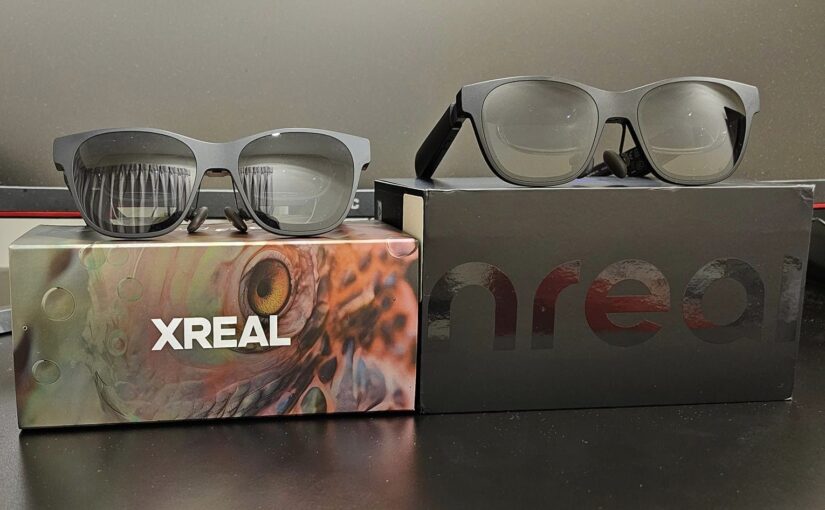As an enthusiast of VR, AR, and MR, I sincerely believe that Apple Vision Pro’s biggest competitor in the future is XREAL (formerly NREAL). XREAL introduced the XREAL Air product, achieving an ultimate slim design for AR glasses and using a smartphone as the computational solution by a Chinese company.
The XREAL Air display component has a limited field of view (FOV) of only 46 degrees, which falls short of the immersive requirements for VR experiences. The developer ecosystem is not robust enough, and there is no dedicated app store, resulting in a lack of sufficient content for the primary AR experience. However, due to its relatively affordable price, lightweight design, higher pixel density (PPI), and a real background light (non-VR-generated realistic background), XREAL Air serves as a 3 DoF giant screen display with superior clarity and comfort compared to various VR devices. It is especially suitable for watching videos and playing games while lying down.
XREAL Air, as an excellent giant screen, is often used in conjunction with the Steam Deck for gaming or with high-end Samsung phones supporting the Dex operating system for watching videos. You may also consider purchasing the hastily released Beam, the official computing terminal device from XREAL, to upgrade the giant screen from 0 DoF to 3 DoF. However, its performance, image quality, operating experience, and application support are not as good as the former two options.
In addition, the second-generation product, XREAL Air Pro 2, improves comfort, speaker sound quality, and achieves individual color calibration. The upcoming XREAL Air 2 Ultra adds two cameras to support 6 DoF and hand tracking, emphasizing Spatial Computing, taking a step further toward XR, resembling a more affordable and lightweight version of Apple Vision Pro. However, facing Apple Vision Pro’s luxurious hardware, XREAL Air 2 Ultra is noticeably lacking in numerous sensors, raising concerns about its overall effectiveness.
Nevertheless, the simplified hardware architecture of XREAL Air 2 Ultra has increased my expectations for the ultimate slim and comfortable XR glasses. As a user of XREAL Air and Air 2 Pro, I will now compare the hardware advancements in the context of video watching and gaming scenarios.
The improvements of XREAL Air 2 Pro are as follows:
- 10% lighter (72 grams for the second generation, compared to 79 grams for the first generation).
- 20% higher brightness (500 nits for the second generation, compared to 400 nits for the first generation).
- Color calibration on an individual basis, resulting in smaller color deviations.
- More balanced weight distribution in the frame, preventing a top-heavy feel.
- The nearsighted glasses frame is positioned at a more appropriate distance from the eyeballs, avoiding contact between eyelids and lenses.
- Softer nose pad cushions, reducing the likelihood of imprints and discomfort on the nose.
- The Pro version includes electrochromic lenses, allowing for three-stage adjustment of outdoor lighting, providing practical functionality.
The drawbacks are as follows (not officially disclosed by the manufacturer):
- Smaller display components and a reduced pupil distance (PD), resulting in blurred edges of the display, with more pronounced effects for individuals with larger pupil distances. This issue was not present in the first generation.
- Unexplained reasons leading to high-contrast scenes, such as white text on a black background, causing more severe glare compared to the first generation.
